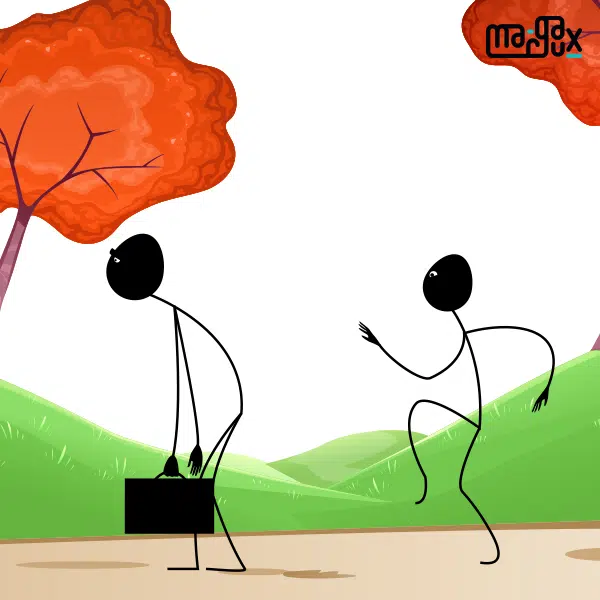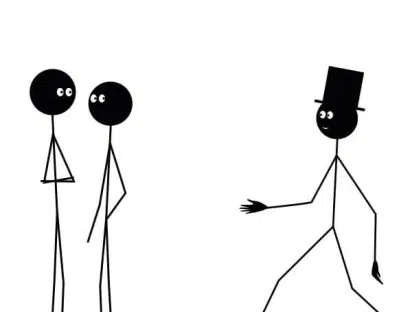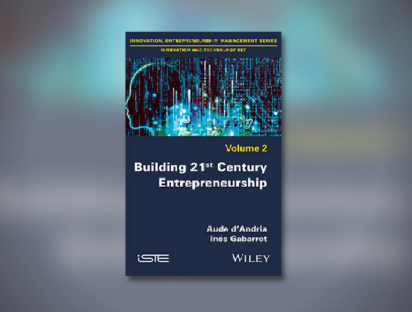Despite appearances, we can learn something from the figure of the trickster, an English word that comes from the old French “trichier,” related to “cheat.” The trickster uses cunning or trickery to deceive, without necessarily being dishonest. But behind this mask that seems to make him an amoral and asocial being lies a more subtle character, an outsider whose speeches and actions disturb conformism and social structures. In this article, we discuss the possibility that this character can help us to act in a good way. Academic business ethics, which we are used to dealing with, has little interest in this. However, it has been considered that the figure of the trickster could, especially in the professional field, indirectly serve as a model for action, and even for moral action. We shall see this through two examples.

One is hard pressed to find references to the trickster in business ethics, especially in the three main English-language journals (Journal of Business Ethics, Business Ethics Quarterly, Business Ethics: A European Review). The fifteen or so articles that refer to it mention it incidentally to denote deception or to make moral distinctions for various forms of deception.
Thus, the trickster represents a real, non-fictional type of character who seeks to achieve their goals by any means, for example by causing others to act immorally in order to gain an advantage.
The trickster, whose cunning may lead them to change their appearance by disguising themselves, may also be elevated by the public to the rank of hero or magician, like some highly successful entrepreneurs when in reality they are merely tricksters or gamblers whose practices are immoral and illegal.
The trickster’s intelligence is sometimes such that it can lead them to achieve ends that would have been unattainable by the practice of truth alone, which can have the consequence of devaluing the very value of truth.
The word “trickster” has also been used figuratively to personify the euphemism, a well-known figure of speech used to soften the impact of an unpleasant fact. Euphemisms can lead economic actors to form attenuated, and therefore misleading, representations of their own actions, when these are objectively immoral.
Finally, reference was made, in a very specific way, to the trickster as conceived by Carl Jung. Jung defined it “an archetypal psychic structure of extreme antiquity” which, in its “clearest manifestations [is] a faithful reflection of an absolutely undifferentiated human consciousness, corresponding to a psyche that has hardly left the animal level” (1).
Notwithstanding this foray into Jung’s work, the brief overview we have offered indicates that work from business ethics generally equates the trickster with the dishonest or the swindler, without seeking to exploit the richness of the character as it appears to us in mythology, folklore or literature.
But before addressing this point, it is worth pausing for a moment to consider Jung’s quotation. It allows us to return to a distinction that appears in the definition of the trickster that we mentioned when speaking of “figure” and “character.” Jung mentions the role of the trickster. This qualification allows us to situate them in a social framework and to propose a definition that is not limited to a list of character traits.
The definitions proposed by two French language dictionaries attest to this distinction. The first insists on the character of the trickster: “borrowed by anthropologists from the English trickster, derived from trick, to designate in tales and legends the character of the trickster, who uses tricks and lies, and whose Western model is that of the fox;” the second introduces the notion of role: “a character who, in very different mythologies, plays a role that consists of disrupting the normal play of events, joking about the gods, etc.” In parentheses, it adds: “it is the raven or the coyote that plays this role in Amerindian myths; Renart, Till Eulenspiegel in European tales” (2).
These definitions make it possible to consider tricksters from two different perspectives : the psychological perspective, which leads to the identification of the character traits of this character, given that flesh-and-blood individuals are likely to possess them; the mythological and folkloric perspective, in which the trickster character is a fiction that can fulfil a social role.
Consider the case of Renart, the fox in the Roman de Renart. He constantly plays tricks, and thanks to his cunning and astuteness, his art of lying and hypocrisy, and his total lack of scruples, he not only succeeds in satisfying his appetites, but also extricates himself from impossible situations, such as when he manages to take on the costume of a pilgrim when, condemned to the gallows, he finds himself “bound, held back on all sides” (3).
Tricksters operate in intermediate, unstable and neutral spaces that anthropologists call “liminal”
Renart embodies renardie, which is cunning and deception par excellence. This is why Nancy Freeman Regalado, a specialist in medieval literature, has studied him as a trickster alongside the character of Tristan in Tristan and Isolde (4). She observes that these fictional characters, although one is an animal and the other a human, are amoral and asocial, and that if they only know how to act by trickery, it is because they are both in the grip of insatiable desires whose fulfilment is hindered by prohibitions. This is why their tricks must be understood as means of obtaining “desired but forbidden objects.”
Regalado also insists that these literary tricksters do not pursue long-term goals. Their tricks “do not seem to lead to the end of a story, to a denouement,” only to their own end. Thus, they are not means to ends, whether good or bad: they are their own ends. The narrative structure of the adventures of Renart and Tristan bears witness to this because it is based on repetition and re-narration, i.e. the recall of past episodes in the present episode.
But a fundamental feature of tricksters is that they operate in intermediate and unstable spaces that anthropologists refer to as “liminal.” They are inspired by the central stage of rites of passage – types of rites that separate “individuals or groups from one status and incorporate them into another” (5) – according to the ternary structure proposed by the ethnologist Arnold Van Gennep (6). He distinguished three moments present in any rite of passage: separation, where the initiate or novice leaves the previous world and the norms that govern it; the transition, an intermediate stage during which the initiate is on the threshold of a new world but has not yet crossed the door allowing access to it; incorporation, where the initiate, having crossed the threshold, incorporates into a new world. Van Gennep names preliminal, liminal and postliminal the rites that correspond to these three stages.
The trickster is a liminal character because he or she lives on the margin, in an in-between, in an interstitial and neutral space that is characterised, in the words of the anthropologist Victor Turner, by “that which is neither this nor that, and yet is both” (7). Literature professor Robert Tally defines liminality as “a threshold between two zones, an anteroom distinct from that which could be said to be definitely inside or outside, here and there,” and one who finds oneself there “must be ever attuned to the presence of adverse or conflicting possibilities” (8). Hence the disconcerting complexity of the trickster, described by another anthropologist, Paul Radin, as “at one and the same time creator and destroyer, giver and negator, he who dupes others and who is always duped himself,” who is irrevocably subject to his appetites and impulses, and who finally “possesses no values, moral or social, [and] yet through his actions all values come into being” (9).
Turner’s phrase: “That which is neither this nor that, and yet is both,” was taken up in an article on leadership. Its author, Gareth Edwards, argues that the traits of the trickster, a typical character in liminal spaces, can help those who teach leadership (10). After highlighting “the importance of liminal spaces as moments where students achieve learning in the form of new perspectives and world views,” he argues that teachers, who play the role of facilitators here, can “draw on examples of ‘trickster’ behaviour […] in leadership learning facilitation,” as this character, an outsider who speaks from the periphery, radically challenges existing norms and can create new ones.
A second notable application concerns the practice of mediation. Robert Benjamin notes that the role of a mediator in resolving conflicts between opposing parties is fundamentally based on intuition rather than on a purely rational calculation (11). The mediator must be able to enable the opposing parties to adopt new perspectives, to get them to construct a context in which they can reach agreement. For Benjamin, this objective is shared by the trickster. Not only do tricksters systematically use their intuition, but they are able to create new frameworks of thought because they “thrive on change and conflict – alternately causing or resolving it” and “serve as mediators, seeking to reconcile immovable objects and irresistible forces.” In short, apart from its deceptive and immoral behaviour, this character can be considered “a valid and useful professional role model for the evolving profession of mediation.”
This enthusiasm, which can be found in some other applications of the trickster figure, should however be moderated. This is because there are fascinating aspects to the trickster, such as their eccentricity, burlesque, extravagance and outspokenness. And we have ambiguous relationships with them through the characters who embody them (Renart, Tristan, Till Eulenspiegel and many others). Thus, Nancy Regalado notes that “we are happy to be called artful, shrewd, clever, even wily, but not sly,” and that if we like to play tricks, we don’t like “to be taken for swindlers and cheats.”
Attempts to apply the trickster figure to professional contexts may be suggestive because of the attraction we may have to mythology, folklore and storytelling, but this attraction should not lead to an exaggeration of the resources we can draw on for our practical lives. Perhaps the use of the trickster figure is also an ingenious and digressive way of linking sometimes unglamorous professional practices to humorous episodes in literature. It is better to be aware of this if we hope that this character can inspire our moral conduct.
Références
(1) C. G. Jung, Four archetypes: mother, rebirth, spirit, trickster, translated by R.F.C. Hull, Routledge Classics, 2003.
References to works in business ethics are as follows: F. T. Hannafey, “Entrepreneurship and ethics: A literature review,” Journal of Business Ethics, 46, 2003, pp. 99-110 ; C. Provis, “The ethics of impression management,” Business Ethics: A European Review, 19(2), 2010, pp. 199-212 ; A. L. Minkes, “Business policy, ethics and society,” Journal of Business Ethics, 14, 1995, pp. 593-601 ; L. Radoilska, “Truthfulness and business,” Journal of Business Ethics, 79, 2008, pp. 21-28 ; K. Lucas & J. P. Fyke, “Euphemisms and ethics: A language-centered analysis of Penn State’s sexual abuse scandal,” Journal of Business Ethics, 122, 2014, pp. 551-569 ; D. W. Hart & R. N. Brady, “Spirituality and archetype in organizational life,” Business Ethics Quarterly, 15(3), 2005, pp. 409-428.
(2) Dictionnaire historique de la langue française Le Robert, 4th edition, 2010, and Larousse online Dictionary.
(3) Le Roman de Renart, ed. J. Dufournet & A. Méline, Paris, GF Flammarion, 1985. My translation.
(4) N. F. Regalado, “Tristan and Renart: Two tricksters,” L’Esprit Créateur, 16(1), 1976, pp. 30-38.
(5) P. Smith, “Rite,” in P. Bonte et M. Izard (eds), Dictionnaire de l’ethnologie et de l’anthropologie, 4th edition, Paris, PUF, 2010.
(6) A. Van Gennep, Les rites de passage, Paris, Émile Nourry, 1909, translated by M. B. Vizedom and G. L. Caffee, The Rites of Passage, University of Chicago Press, 1960.
(7) V. W. Turner, The forest of symbols: Aspects of Ndembu ritual, Cornell University Press, 1967.
(8) R. T. Tally, “‘A utopia of the In-Between,’ or, limning the liminal,” in D. Downey, I. Kinane, & E. Parker (eds), Landscapes of liminality: Between space and place, Rowman & Littlefield International, 2016.
(9) P. Radin, The trickster: A study in American Indian mythology. With contributions by K. Kerenyi and C. G. Jung, Schocken Books, 1956.
(10) G. Edwards, “Problematizing leadership learning facilitation through a trickster archetype: An investigation into power and identity in liminal spaces,” Leadership, 17(5), 2021, pp. 542-559.
(11) R. D. Benjamin, “The mediator as trickster: The folkloric figure as professional role model,” Mediation Quarterly, 13(2), 1995, pp. 131-149.
How to cite this article: A. Anquetil, “Can the trickster figure inspire our moral conduct?” Philosophy & Business Ethics – Alain Anquetil’s Blog, 21 September 2022.




